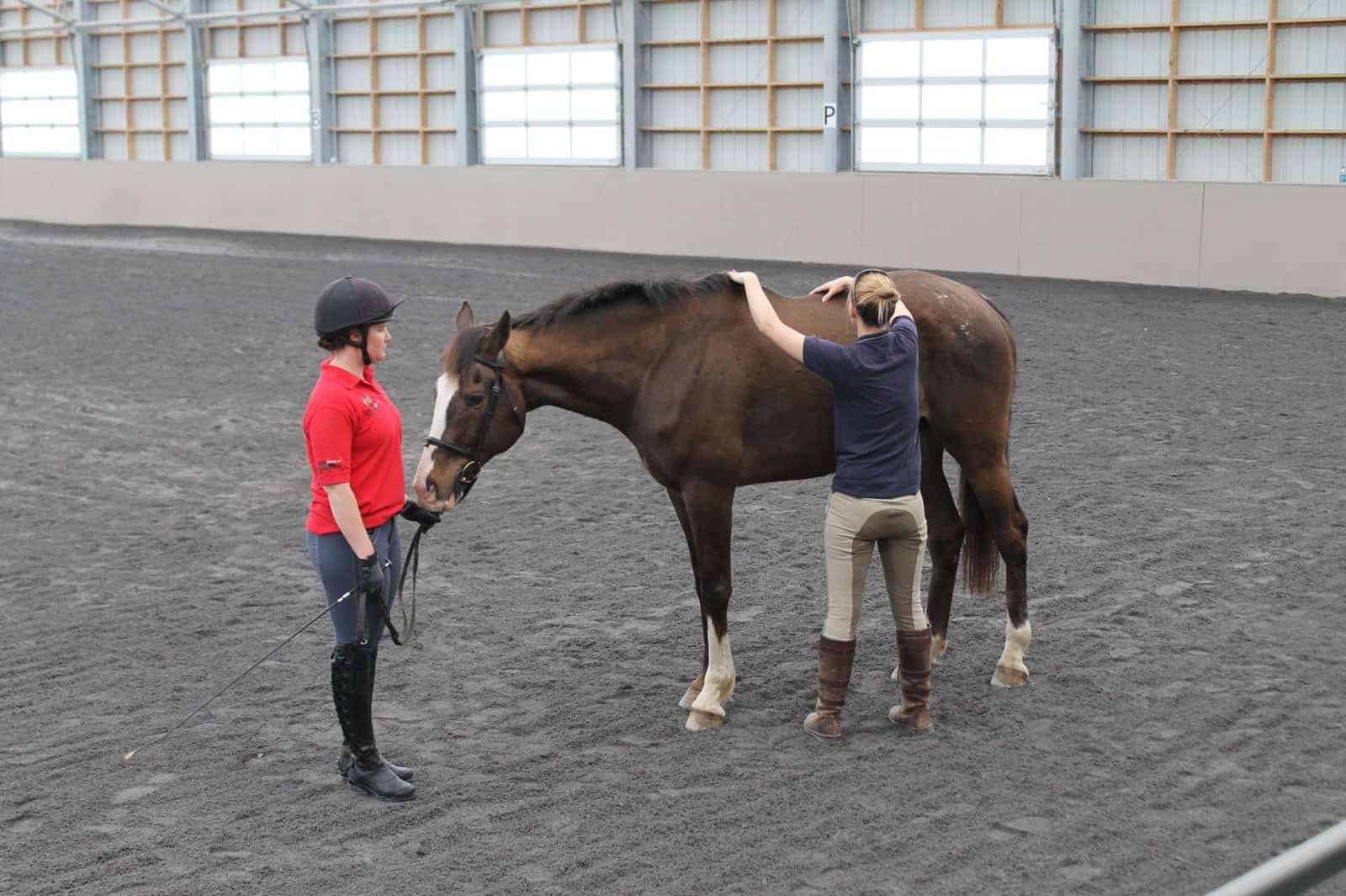Subtle Signs of Improper Saddle Fit
- Topics: Article, Back and Spine, Behavior, Musculoskeletal System, Tack

Clues include dry spots under the saddle after a workout (indicating too much pressure in small areas, inhibiting sweat glands). You might also see hair starting to rub the wrong way or broken off, falling out, or replaced by white hairs due to pressure necrosis (tissue death) or damage to pigment-producing portions of the hair follicles. Wet spots and dry spots indicate saddle pressure isn’t evenly distributed.
“It isn’t always the saddle causing a dry spot,” says Mike Scott, a South Carolina-based equine massage therapist and Master Saddlers Association-certified fitter. “It could be the way the rider is sitting with uneven weight distribution. Or, if the horse is high-headed with its back inverted, there may not be any pressure in certain areas because the back is hollow instead of rounded. There are multiple reasons, but uneven pressure is something to look for.”
He suggests keeping an eye out for rub spots after riding and whether the hair pattern is smooth and flat or starting to go the wrong way or twist, becoming matted from friction.
“Some riders get freaked out if the (saddle) pad shows more evidence of pressure/wear in certain areas, but I’ve found that saddle pads are always darker toward the rear (where there’s naturally more wear),” Scott continues. “This is where the horse’s back moves the most, in the lumbar region, with more back-and-forth and side-to-side movement. In the shoulder area you also see dirty areas. Under the tree points or the stirrup bars are the lightest areas because that’s where there is less movement. From there toward the back of the saddle is kind of gray.”
While this is the typical pattern you might see on a saddle pad post-riding, it doesn’t mean there’s not a problem. “Keep in mind that the different regions may look different if the horse was dirty,” says Scott. “If you are looking at sweat pattern on the saddle pad, the left side almost always has less dirt than the right side. People usually start grooming on the left and do a nice job and are in more of a hurry on the right side.
“I like to try different saddles and see if the saddle pad still shows those spots in the same areas,” he adds. “This can be part of the process of elimination. If these things take care of themselves then we know there might be an issue with the regular saddle.”
The horse’s response to being groomed can also be a clue. “Was he this ouchy yesterday? Is there an area that’s sensitive and sore? The horse will tell you,” says Scott. “There can be a number of telltale signs that a saddle doesn’t fit, if you listen to the horse. You might have a very stoic horse, but if the saddle is making him sore he will usually let you know.”
Written by:
Heather Smith Thomas
Related Articles
Stay on top of the most recent Horse Health news with















